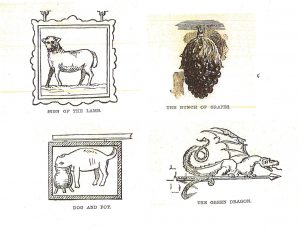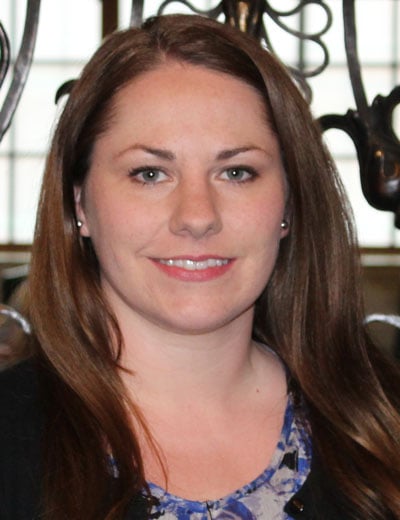 The beginning of summer and the influx of tourists to the city of Boston has me thinking about a fun activity I did last year: a historic tavern tour. This was an entertaining group outing where we went on a historical tour of the city, all the while stopping at historic bars and having a beer or two at each. I enjoyed this experience as it combined two of my favorite things, history and beer.
The beginning of summer and the influx of tourists to the city of Boston has me thinking about a fun activity I did last year: a historic tavern tour. This was an entertaining group outing where we went on a historical tour of the city, all the while stopping at historic bars and having a beer or two at each. I enjoyed this experience as it combined two of my favorite things, history and beer.
Shortly after the tour I came across a book in our library called, Old Boston Taverns and Tavern Clubs, by Samuel Adams Drake. When I began to look through it I noticed that it contained references to one of my favorite parts of the history and beer tour, old tavern signs. As it turns out tavern signs were quite literal in Colonial Boston. One factor was that many people were illiterate. However, based on these easy-to-read tavern signs, people could easily find the nearest watering hole for a drink.
The tour and the book on old taverns got me thinking about this topic from an angle that I often gravitate to when doing my own research. I ask myself, What about women? Were they involved? If so, how?
I enjoy researching the social and cultural history of women in Colonial New England. I have researched the roles of women in Puritan society and the changes that the American Revolution spurred for Massachusetts women both individually and within society at large. Hence, digging a little bit into colonial women and tavern-keeping, or “drink selling,” was right up my alley.
What about women? Were they involved? If so, how?
I spent some time browsing through the NEHGS library stacks for books that might contain information about women and their role in taverns. One book in particular that I found was In Public Houses: Drink & The Revolution of Authority in Colonial Massachusetts by David W. Conroy.
Conroy found that women got in on the tavern business as well. Sometimes they would help their families or husbands run the tavern, while other women ran them on their own. This kind of enterprise was generally frowned upon for women to be involved in, as it was in the public sphere, a traditionally male arena, but the one factor that allowed this was when a woman was a widow. Widows often had no other choice but to work to support themselves and their families, and selling drink was one such avenue. (Of course, working as tavern-keepers was not all that out of the realm of “women’s work”; after all, they were the ones responsible for cooking, cleaning, and domestic manufacture.)
Widows who operated taverns did not do so without challenges. They often had trouble getting a license to operate. If a widow remarried, she would often be unable to have her own license and would need to get her husband to apply for the license in his own name. According to Conroy, “in 1707, women operated twenty-six of the sixty-three legal houses” in Boston.[1] By 1768, “11 of 25 new retailers were women. However, after the Revolution these women began to be pushed out of this enterprise with virtually no women operating their own taverns.“ By 1796, only 9 of 128 retailers in Boston were women.[2]
Conroy’s use of inventories is impressive.
What I found particularly interesting about these accounts of women in the business of “drink selling” were the sources that were used to gather information. Since working at NEHGS I have a new appreciation for how historical documents can be used and how we can tease out bits of information from them. Conroy’s use of inventories is impressive.
It is truly amazing what you can decipher from these sometimes overlooked sources. Inventories can actually be a wealth of information on ancestors including occupation, daily work, and social status. They also provide useful information on women’s activities during the colonial period. For example, Conway uses inventories to learn how well each tavern was stocked, how well it was lit based on the number of candles listed, and how many patrons it might have served based on the number of glasses used, etc.
All in all, inventories are an excellent source that can be used to discover more personal or detailed information about our ancestors that cannot be found in official documents. While inventories do not contain the standard information we seek as family history researchers, they are an important source to keep in mind during your research.
Sources
Samuel Adams Drake, Old Boston Taverns and Tavern Clubs (Boston: W.A. Butterfield, 1917).
David W. Conroy, In Public Houses: Drink & The Revolution of Authority in Colonial Massachusetts (Chapel Hill, N.C.: University of North Carolina Press, 1995).
Laurel Thatcher Ulrich, Goodwives: Image and Reality in the Lives of Women in Northern New England 1650–1750 (New York: Oxford University Press, 1983).
Notes
[1] David W. Conroy, In Public Houses: Drink & The Revolution of Authority in Colonial Massachusetts (Chapel Hill, N.C.: University of North Carolina Press, 1995), 71.
[2] Ibid., 318.
Share this:

About Michelle Norris
Michelle holds a master’s degree in history from Salem State University, where she specialized in women in colonial New England. She completed her bachelor’s degree with concentrations in history and gender studies from the University of Massachusetts, Lowell. Michelle has a background in public history and has worked with the National Archives and Records Administration in Waltham, the Beverly Historical Society, and the Sargent House in Gloucester, Massachusetts. Her research interests include women’s history, society and culture, early America, and the American Revolution.View all posts by Michelle Norris →